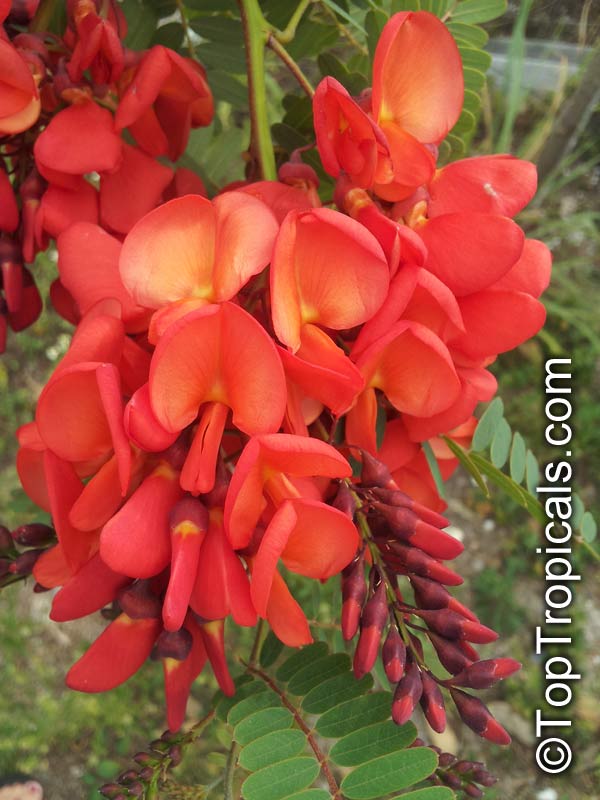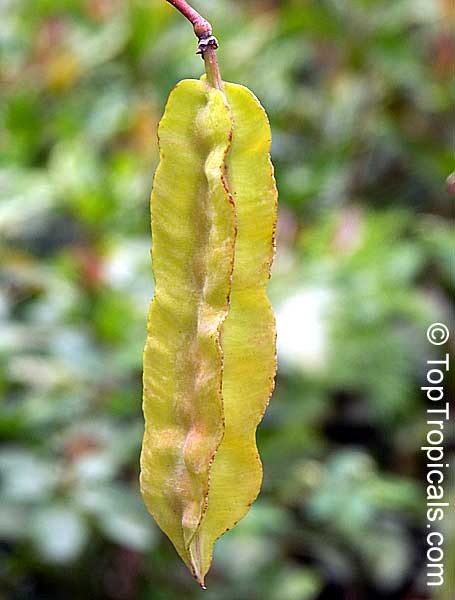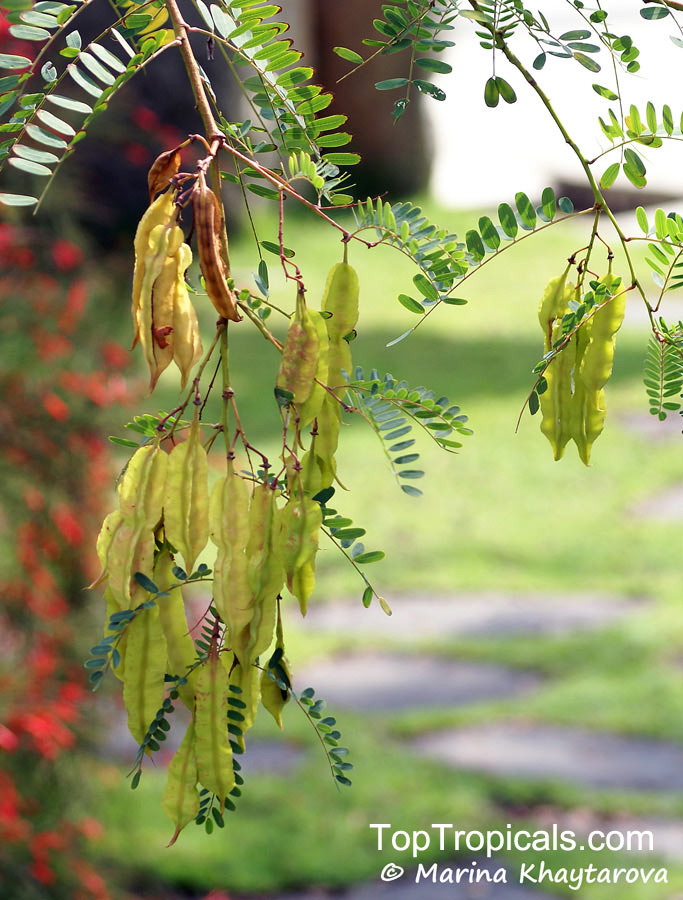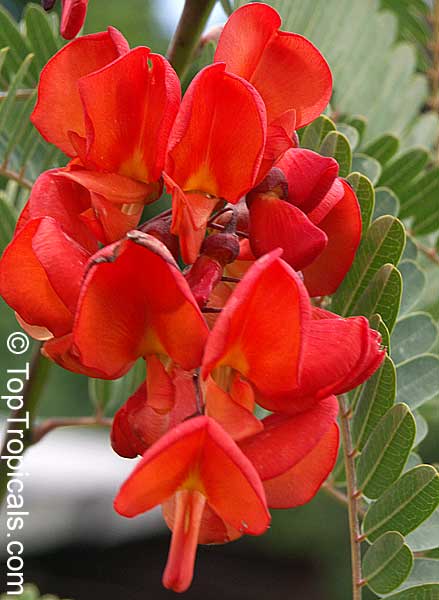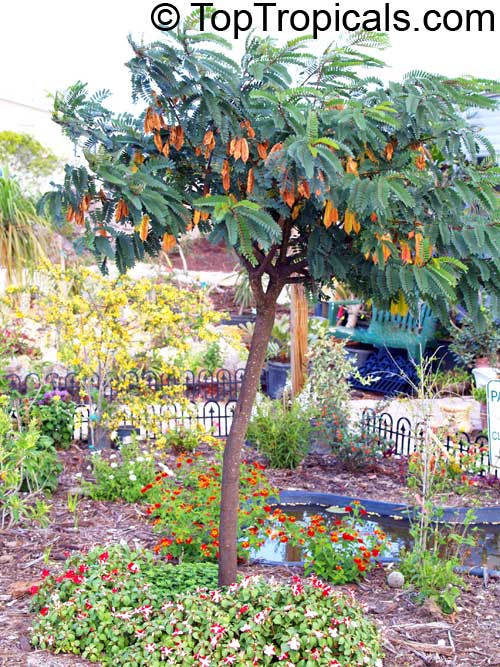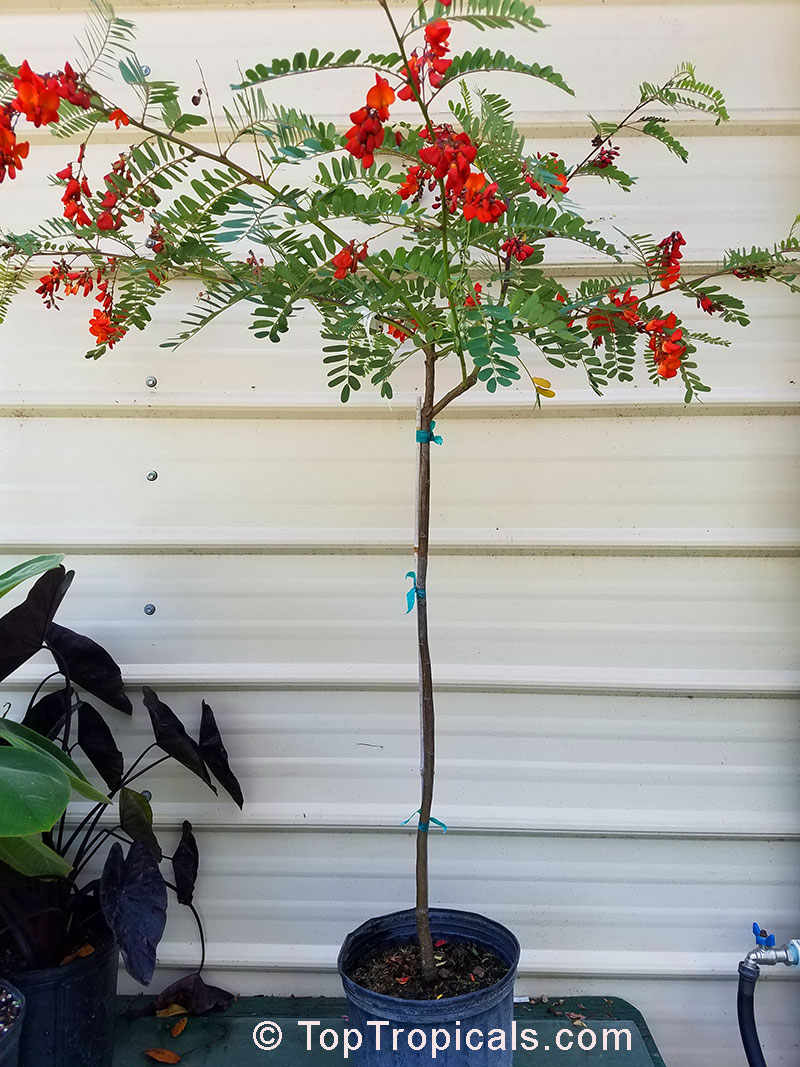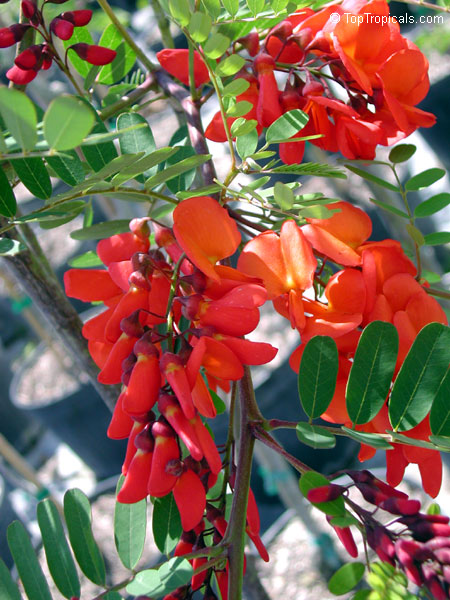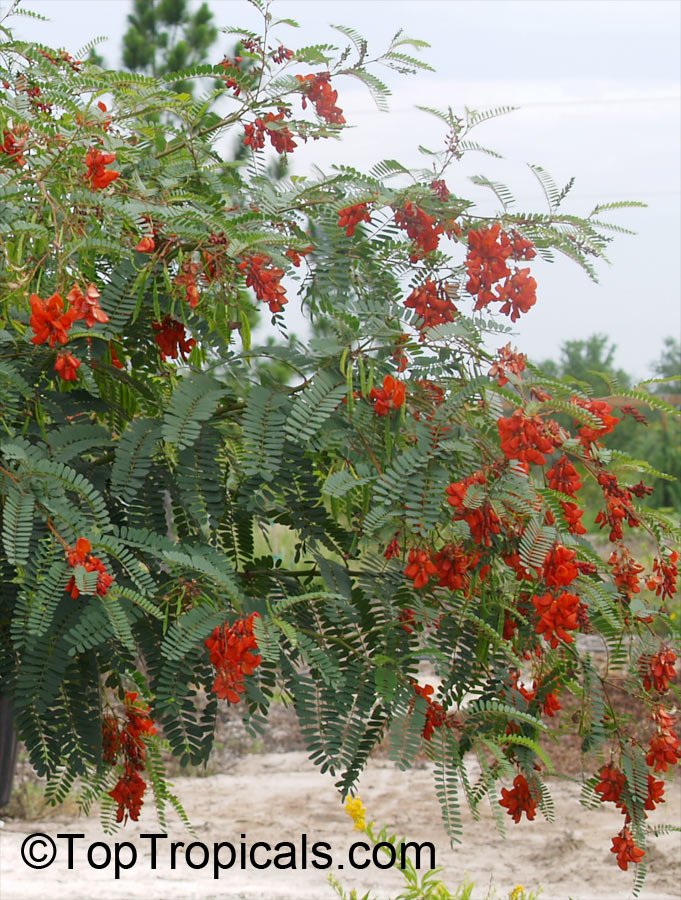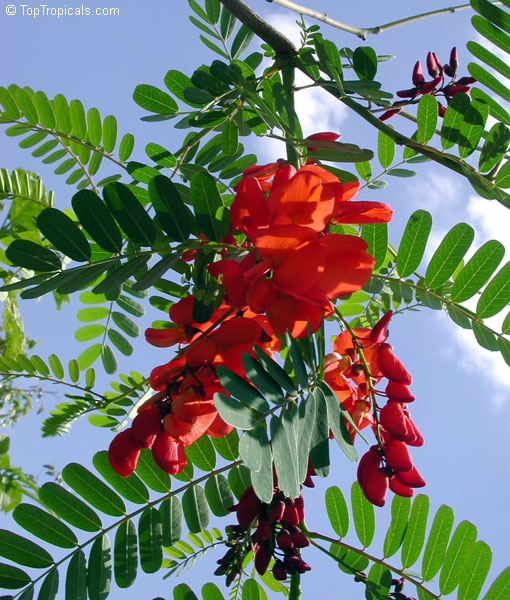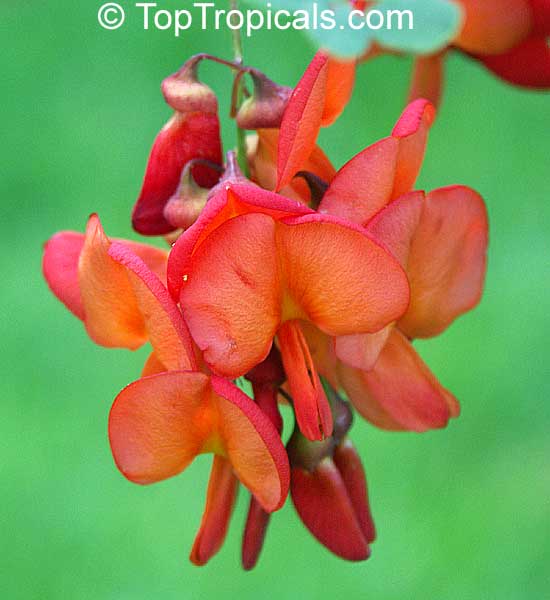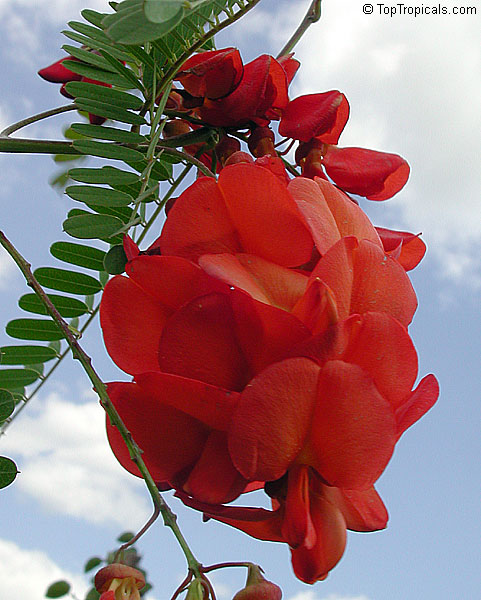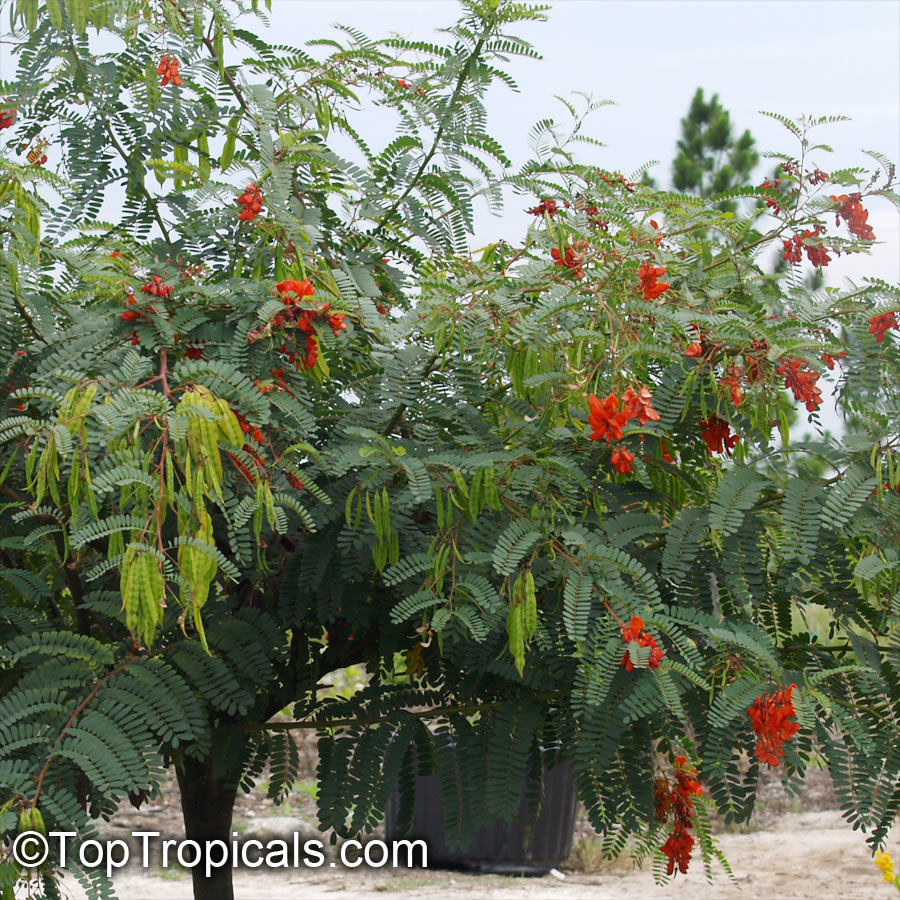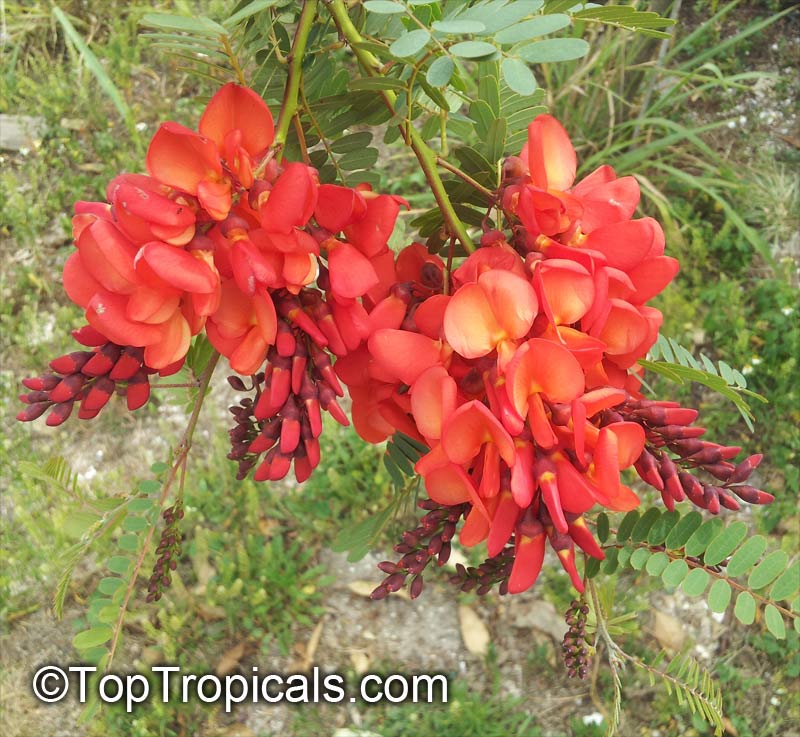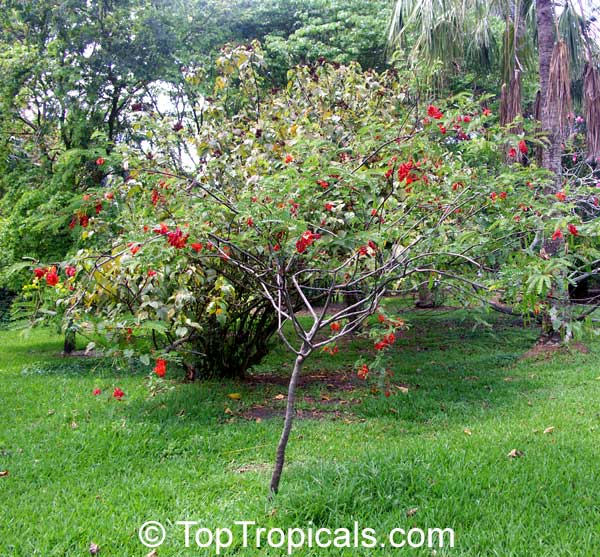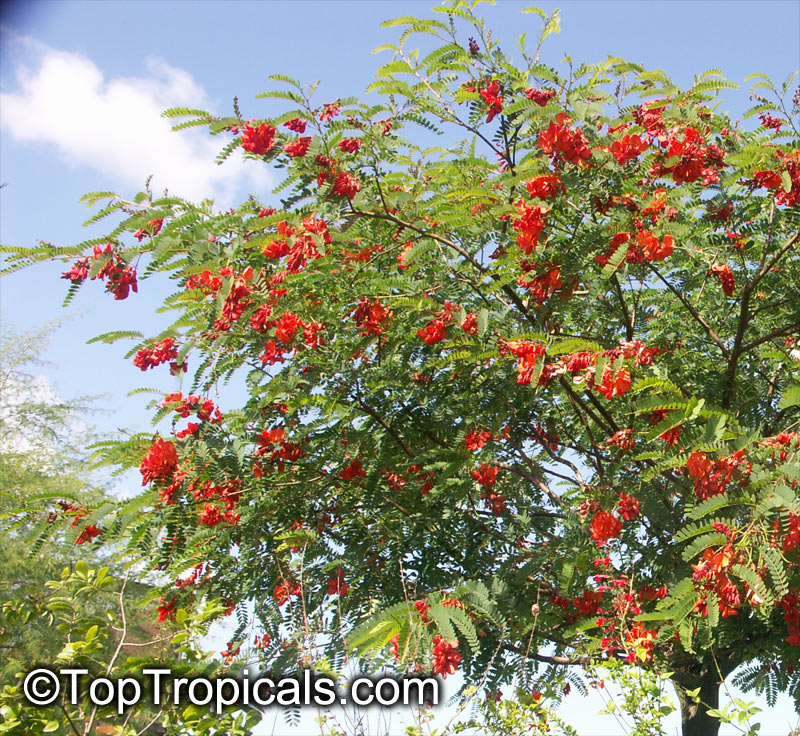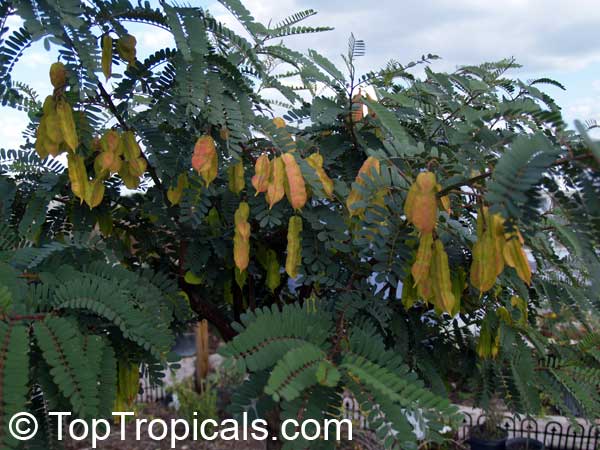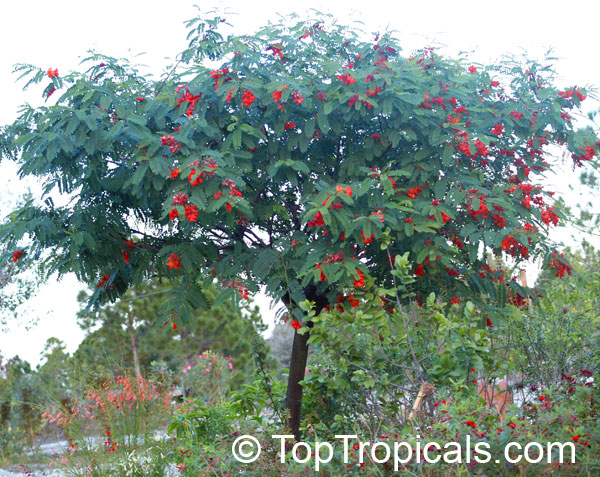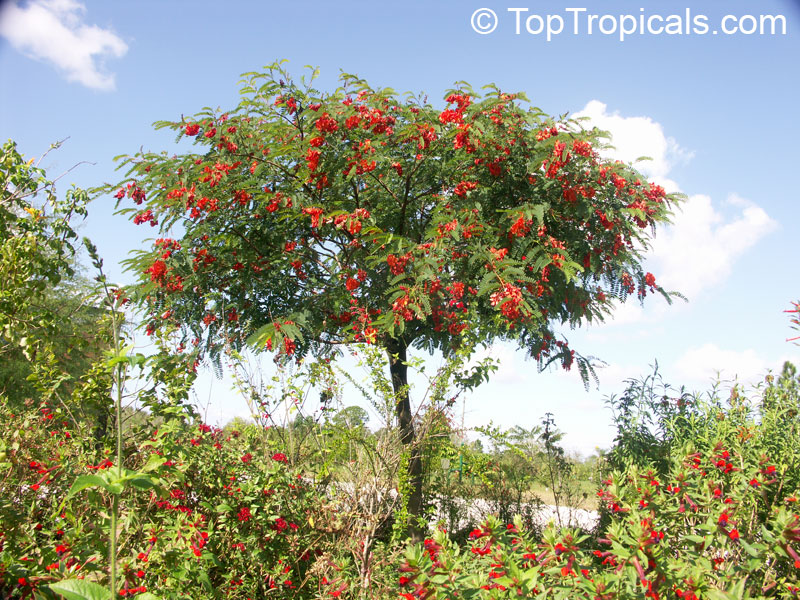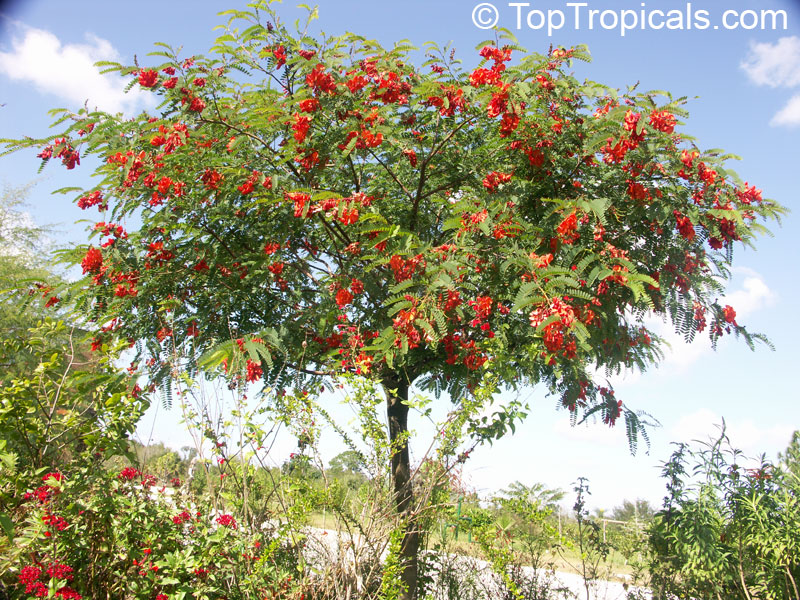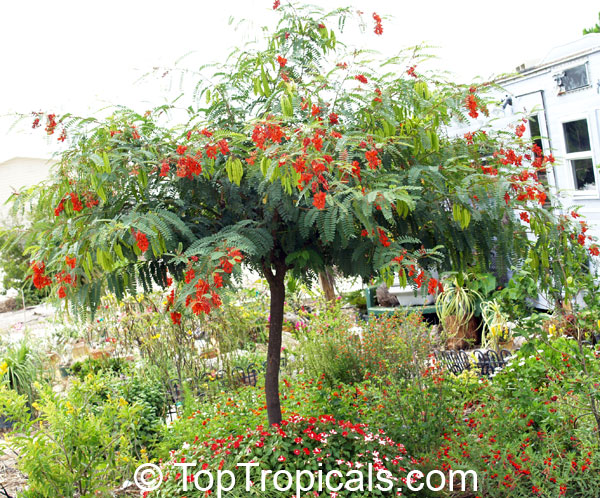Sesbania punicea (Rattle Box Tree)
Top Tropicals Plant Encyclopedia
Botanical names: Sesbania punicea, Sesbania tripetii, Daubentonia tripetii
Common names: Rattle Box Tree, Chinese Rattlebox, Rattlebush, Spanish Gold, Scarlet Wisteria, Red Sesbania
Family: Fabaceae
Subfamily: Faboideae
Origin: Argentina, Uruguay and southern Brazil










Small bushy tree up to 15 feet tall with spectacular clusters of red flowers. The plant has bright green, drooping leaflets in opposite pairs, and the plant displays very attractive pea-like flowers in hanging clusters appearing from spring to fall. Throughout the summer and fall, the plant produces hundreds of seedpods that may stay on the plant through the winter. The four-winged seedpods hang in clusters, and mature from green to brown. Each pod contains 3-9 seeds, which create a distinct rattling sound when shaken or moved by a breeze. The pods eventually break open, releasing thousands of seeds which grow into new Sesbania plants. The plant may become invasive when grown near water, seeds spread by water streams. The winged seedpods drop off of the plant into nearby water and then travel downstream to fertile ground. The seeds have a very high germination rate, so many new plants sprout annually. All parts of the plant, particularly the seeds, are poisonous to mammals, birds and reptiles. As a small tree it has a spreading open crown reaching 6 to 8 feet in height. It often forms dense thickets. In the United States, the tree was introduced as a garden ornamental. The plant matures in one year and blooms the first year, too.
